Shi Bao Village
Shi Bao Village
Shibaozhai, a national AAAA-level tourist attraction, a national key cultural relic protection unit, is one of the 30 best new tourist landscapes in the Three Gorges of the Yangtze River, one of the seven wonders of China on the American Discovery Channel and one of the eight wonder buildings in the world.
Shibaozhai, located on the North Bank of the Yangtze River in Zhongxian County, Chongqing City, is known as the "Pearl on the River", 45 kilometers away from Zhongxian City. There is a huge stone bent over ten feet above the river and pulled up by a steep solitary peak. It is said that it is a colorful stone left by Nuwa Butian, so it is called "Shibao". This stone is shaped like a jade seal, also known as "Yuyin Mountain". At the end of the Ming Dynasty, Tanhong uprising called himself "King Wuling". According to this, it was a stockade and "Shibao stockade" came from it.
Shibaozhai was built in Wanli period of Ming Dynasty and was perfected in Kangxi and Qianlong years. The tower is built on the Yuyin Mountains. It is towering on the mountains. The eaves spread their wings and have a strange shape. The whole building is composed of Zhaimen, Zhaishen and attic (Zhaiding Stone Brake). It has 12 stories and is 56 meters high. It is a wooden structure. The original 9 storeys, Zhaiding Temple Temple of Heaven, implies the meaning of "nine heavens". The top three floors were built in 1956 when the building was repaired.
In 2009, the rescue protection project, which lasted more than three years and cost nearly 100 million yuan, was fully completed and reopened to the outside world. New Shibao Zhai, which has reappeared, has become a "bonsai" in a large river on the Yangtze River surrounded by a huge embankment and enjoys the reputation of "Xiaopenglai" in the Yangtze River.
About history
At the end of the Ming Dynasty, Tan Hong, the peasant leader, uprising, was called Shibaozhai. The Temple of Heaven at the top of Shibaozhai Peak was built in the Ming Dynasty (1572-1619) and was founded by Yin Yu of Zhizhou, Zhongzhou, more than 400 years ago. In the Qing Dynasty, Kangxi Zhong and Qianlong repaired many times, and the last one was Qingxianfeng eight years (1858). The construction of Zhailou was later than Tianzidian, which was built in the early years of Qianlong, and was rebuilt by Tang Hongyun, a Gongsheng student in Jiaqing in 1795.
Zhailou is built on the hill, with its eaves and wings spreading, and it is very spectacular. The attic has 12 floors, with a height of 56 meters. There are ancient Temple Temple Temple Temple on the top of Zhaiding, facing rocks to build walls, towering temples, magnificent, as well as cultural relics showrooms, duck caves and Limi caves.
Shibaozhai is famous for its unique architecture and many interesting legends. It has been listed as one of the eight most exotic buildings in the world. Since the opening up in 1979, nearly 220,000 Chinese and foreign tourists have been received annually, which has been praised as the "Pearl on the River" by Chinese and foreign tourists.
Shibaozhai is a lonely peak that rises from the ground to the top of the mountain in the early years of the Qing and Qianlong dynasties. It built a temple on the top of the mountain with the help of iron wires on the wall. During the Jiaqing period, skilled craftsmen were hired to study how to replace the iron wires. So the nine-storey Pavilion was built according to the situation of the mountain. From then on, pilgrims and tourists could avoid the pain of climbing iron wires and go up to the top of the mountain directly. In 1956, it was rebuilt to 12. Floor, now it has become a "little Penglai" for tourists to look at the scenery of the Yangtze River.
Shibaozhai is located on the North Bank of the Yangtze River in Zhongxian County, Chongqing, 45 kilometers away from Zhongxian City. There is a huge stone bent over ten feet above the river and pulled up by a steep solitary peak. It is said that it is a colorful stone left by Nuwa Butian, so it is called "Shibao". This stone is shaped like a jade seal, also known as "Yuyin Mountain". At the end of Ming Dynasty, Tanhong Uprising was a stockade, and the name of "Shibaozhai" came from it.
General situation
Shibaozhai Tower Built on Yuyin Mountain
Zhaimen is a brick structure, more than 6 meters high, with the inscription of "Xiao Penglai" inlaid in porcelain. On both sides of Zhaimen, there are relief sculptures such as "Five Dragons Holding the Holy Spirit" and "Nazhao Naohai", which are exquisite, meticulous and lifelike.
There are three groups of sculptures in the village. One is the story of Bamenzi shaving his head and Baocheng, the other is the story of Zhang Feiyi's Shiyan and the third is the story of Qin Liangyu, the hero of scarf. There is an ancient temple at the top of the village, named "Lan Ruo Dian". There is a simple and elegant Shibao Street under the village.
Shibaozhai: A Wonderful Skywork Architecture
Shibaozhai is the largest and most storied bucket-piercing wooden structure in China. After the Three Gorges impoundment and power generation in 2003, the water level of the Yangtze River will rise to the gate of Daozhai Village, and a surface lake of more than 120 mu will be formed around the Muzhai Village. Shibaozhai Village will be transformed from a mountain village to a "water village".
Protection of cultural relics
The rescue protection project of Shibaozhai in Zhongxian County started in December 2005. The project consists of five parts: embankment and slope protection project, dangerous rock treatment project and traffic bridge project. According to Huang Jianhua, director of the Cultural Relics Bureau of Zhongxian County, Chongqing, the Shibaozhai Conservation Project has been completed, and the cultural relics and monuments among them have been well preserved. Zhongxian will reopen the Shibaozhai Scenic Area on April 17, with the highest ticket price set at 50 yuan. It is estimated that the scenic spot can attract more than 400,000 tourists from home and abroad every year, and achieve tourism income of about 30 million yuan. Shibaozhai, located on the North Bank of the Yangtze River in Zhongxian County, Chongqing, was built in Wanli Period of the Ming Dynasty. It is the largest existing wooden structure with the largest volume and the largest number of floors in China. It is called one of the "Eight Wonderful Buildings in the World" and also enjoys the reputation of "Xiaopenglai" in the Yangtze River.
In order to solve the problem of large amount of water seepage in the landslide area in front of the mountain gate, they dug 30 meters deep down in the landslide area and built 50 meters high cement retaining wall to form a slope-facing embankment. On April 17, 2009, the rescue protection project of Shibaozhai, Zhongxian County, Chongqing, which lasted more than three years and cost nearly 100 million yuan, was completed and the scenic spots reopened. New Shibaozhai, which has been re-emerged, has become a "bonsai" in a large river on the Yangtze River surrounded by a huge embankment. The door reopened on April 17, 2009.
Good reputation
Shibaozhai: A Wonderful Skywork Architecture
"Southern Tianbao Seal (Jinpeng) Jiangqiu, the twelfth floor of fine carving. The side chapters of the paintings can't be carried away, leaving it as Zhongzhou in Dangzhen.
This poem by Zhou Beixi accurately depicts the whole picture of Shibaozhai, which is known as one of the Eight Wonderful Landscapes in the World.
The whole village is divided into two parts, nine stories below the mountain and three stories on the mountain. From a distance, we can see 12 stories with high eaves. They are all in one, magnificent and magnificent, totally 50 meters high. There are inscriptions on every stone wall in the cabinet. The top of the mountain is a flat stone dam with an ancient temple, Tianzidian, which was founded in the reign of Kangxi and Qianlong, and is the highest point of the village. The palace overlooks the Yangtze River, sails in the blue sky, unlimited scenery and a glance.
Tourism information
Chongqing Chaotianmen Traffic Square Bus Station arrives in Zhongxian in 4 hours by coach or speedboat at Chaotianmen Wharf, and transfers to Shibaozhai in Zhongxian Bus Station (30 minutes one shift).
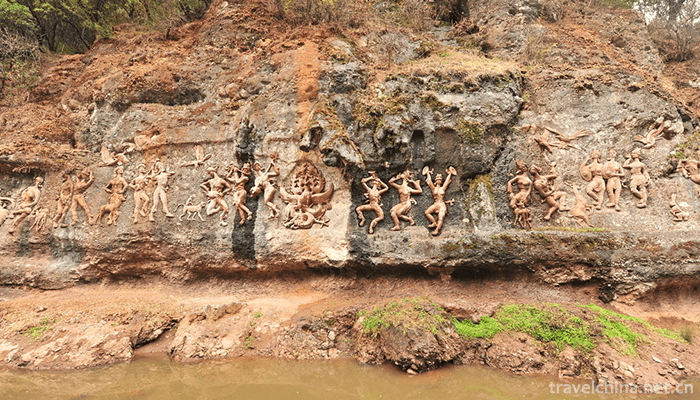
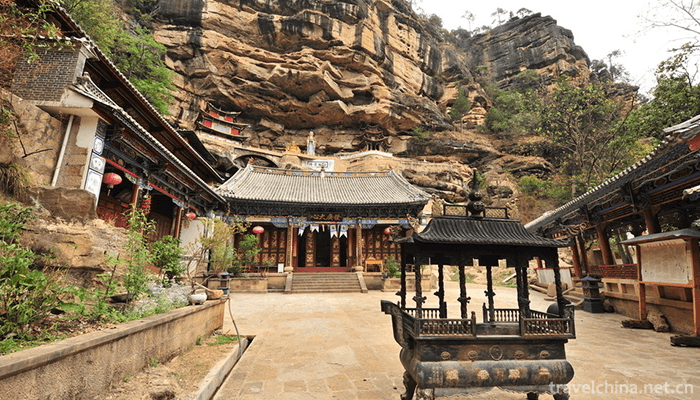
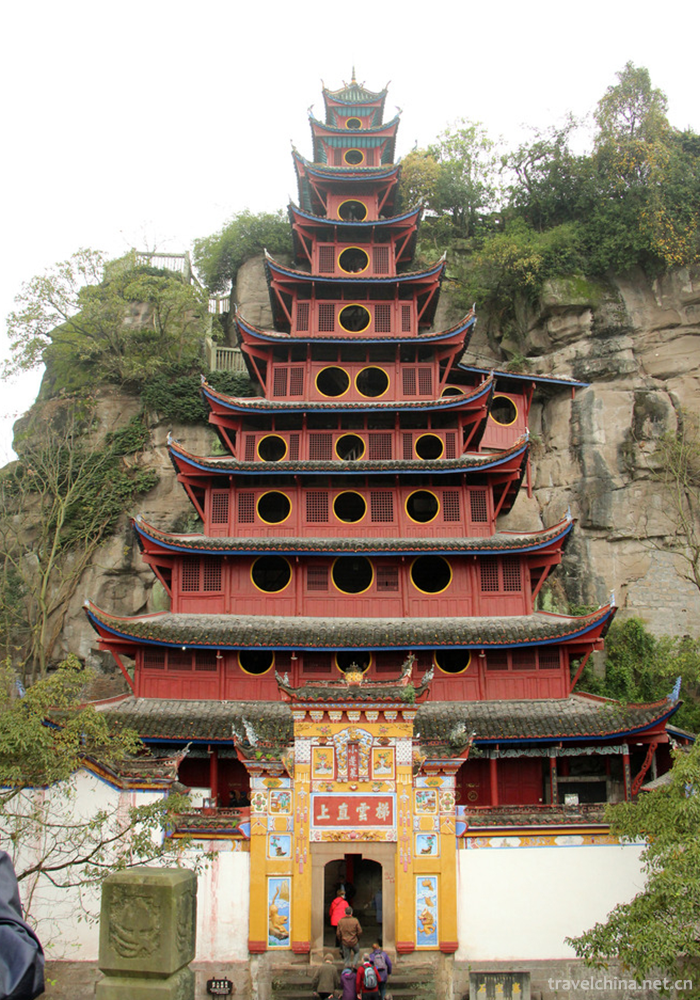
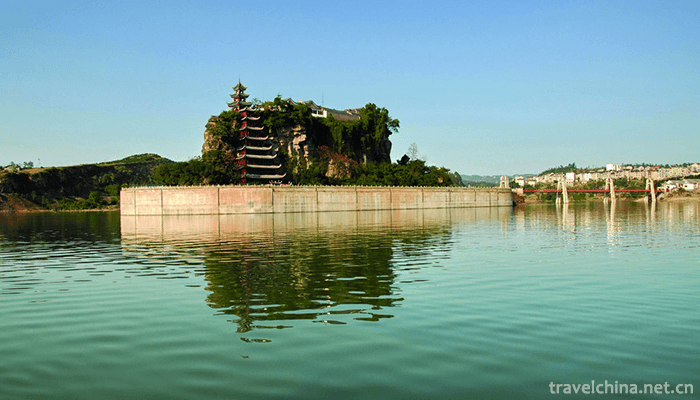
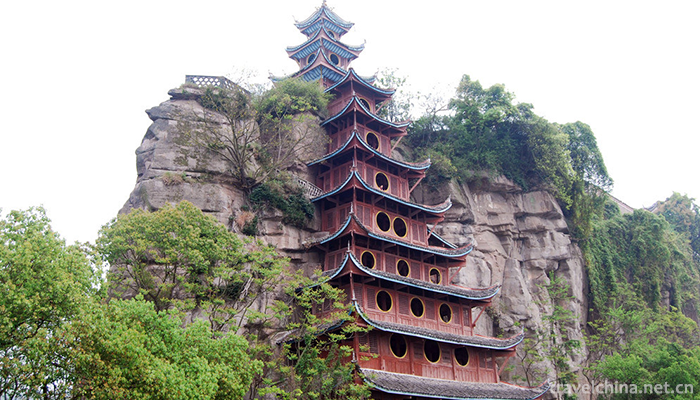
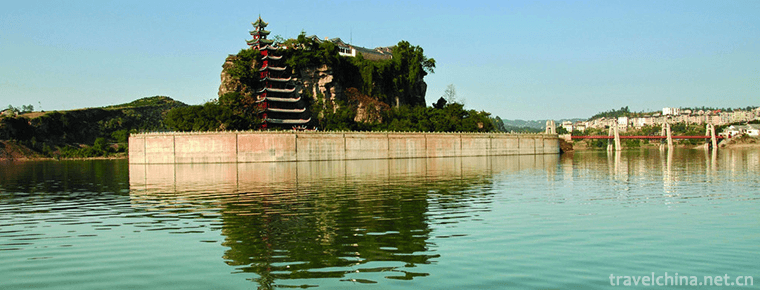
-
1.sausageTime 2018-10-12
-
2.Dalian Laohutan Ocean Park
Dalian Laohutan Ocean Park is located in the middle of the southern coast of Dalian, a national scenic spot. It covers an area of 1.18 million square meters
Time 2018-12-02 -
3.Shenzhen Overseas Chinese Town Tourist Resort
Shenzhen Overseas Chinese Town, located in the Rhododendron Hill of Shenzhen Overseas Chinese Town, is the latest generation of large theme parks built by the Overseas Chinese Town after the splendid
Time 2018-12-12 -
4.Chengjiang biota
Chengjiang biota is located near Maotianshan, Chengjiang, Yunnan Province, China. The stratum of Chengjiang biota is yellow-green silty shale of Yudanshan section of Qiongzhusi Formation of Lower Camb
Time 2019-01-05 -
5.Bai nationality tiedyeing skills
Bai tie-dyeing technology, the local traditional textile dyeing technology in Dali City, Yunnan Province, is one of the national intangible cultural heritage.
Time 2019-04-03 -
6.dongjing music
Dongjing music is a very ancient traditional instrumental music, which originated in Sichuan Province in the Song Dynasty and is now popular in Sichuan Province
Time 2019-04-28 -
7.Huangmei Opera
Huangmei Opera, formerly known as Huangmei Diao and Tea Picking Opera, originated from Huangmei Opera in Hubei Province and grew stronger than Anqing Opera in Anhui Province.
Time 2019-05-04 -
8.Liu Sanjies Ballads
Liu Sanjie's folk songs, a local traditional folk literature in Yizhou City, Guangxi Zhuang Autonomous Region, are one of the national intangible cultural heritages.
Time 2019-05-13 -
9.Xiping Folk Song
Xiping Folk Song is a traditional folk song in Xiping Town, Xixia County, Nanyang City. Xiping Town, located in the hinterland of Funiu Mountain in Western Henan Province, is located in the combinatio
Time 2019-07-01 -
10.Administrative division of Deyang
Deyang City has 6 county-level administrative divisions (Municipal District 2, county-level city 3, county-1), and 84 township level administrative divisions (street 13, town 67, township 4). It covers an area of 5911 square kilometers and has a population of 3.92 million.
Time 2020-12-14 -
11.Leshan post and Telecommunications
By the end of 2018, there were 253 post offices in Leshan City, with an average of one postal service network for every 50.29 square kilometers and 12900 people. There are 79 postal routes in the city, with a total length of 3490 km. There are 158 urban delivery routes
Time 2020-12-17 -
12.Yibin special dishes
Yibin people like noodles most, such as stewed chicken noodles, salty and fresh noodles, sausage noodles, beef noodles, Beijing sauce noodles, mushroom noodles, three fresh noodles, spicy chicken noodles, eel noodles, Longfeng noodles. Among them, burnin
Time 2020-12-18